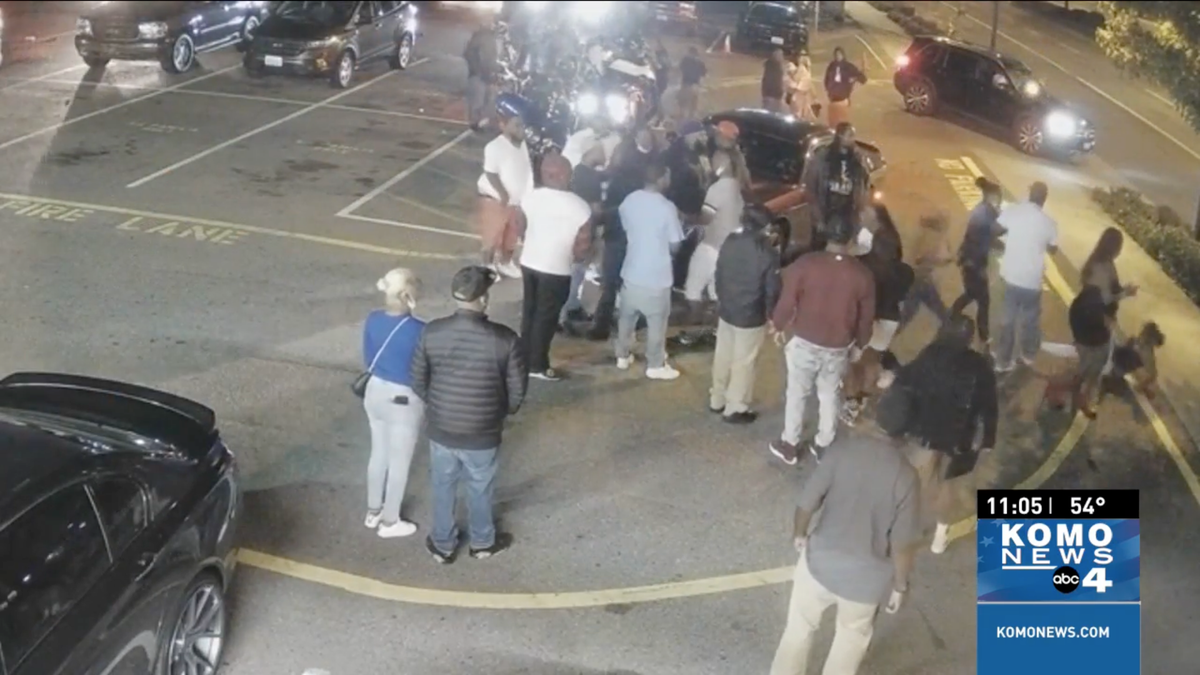A judge in Washington state has blocked video evidence that’s been “AI-enhanced” from being submitted in a triple murder trial. And that’s a good thing, given the fact that too many people seem to think applying an AI filter can give them access to secret visual data.



How long until we got upscalers of various sorts built into tech that shouldn’t have it? For bandwidth reduction, for storage compression, or cost savings. Can we trust what we capture with a digital camera, when companies replace a low quality image of the moon with a professionally taken picture, at capture time? Can sport replays be trusted when the ball is upscaled inside the judges’ screens? Cheap security cams with “enhanced night vision” might get somebody jailed.
I love the AI tech. But its future worries me.
Dehance! [Click click click.]
Just print the damn thing!
That scene gets replayed in my mind three or four times a month.
AI-based video codecs are on the way. This isn’t necessarily a bad thing because it could be designed to be lossless or at least less lossy than modern codecs. But compression artifacts will likely be harder to identify as such. That’s a good thing for film and TV, but a bad thing for, say, security cameras.
The devil’s in the details and “AI” is way too broad a term. There are a lot of ways this could be implemented.
I don’t think loss is what people are worried about, really - more injecting details that fit the training data but don’t exist in the source.
Given the hoopla Hollywood and directors made about frame-interpolation, do you think generated frames will be any better/more popular?
Han shot first.
Over Greedo’s dead body.
Correct!
In the context of video encoding, any manufactured/hallucinated detail would count as “loss”. Loss is anything that’s not in the original source. The loss you see in e.g. MPEG4 video usually looks like squiggly lines, blocky noise, or smearing. But if an AI encoder inserts a bear on a tricycle in the background, that would also be a lossy compression artifact in context.
As for frame interpolation, it could definitely be better, because the current algorithms out there are not good. It will not likely be more popular, since this is generally viewed as an artistic matter rather than a technical matter. For example, a lot of people hated the high frame rate in the Hobbit films despite the fact that it was a naturally high frame rate, filmed with high-frame-rate cameras. It was not the product of a kind-of-shitty algorithm applied after the fact.
It will wild out for the foreseeable future until the masses stop falling for it in gimmicks then it will be reserved for the actual use cases where it’s beneficial once the bullshit ai stops making money.
Might? We’ve been arresting the wrong people based on shitty facial recognition for at least 5 years now. This article has examples from 2019.
On one hand, the potential of this type of technology is impressive. OTOH, the failures are super disturbing.
Probably not far. NVidia has had machine learning enhanced upscaling of video games for years at this point, and now they’ve also implemented similar tech but for frame interpolation. The rendered output might be 720p at 20FPS but will be presented at 1080p 60FPS.
It’s not a stretch to assume you could apply similar tech elsewhere. Non-ML enhanced, yet still decently sophisticated frame interpolation and upscaling has been around for ages.
Nvidias game upscaling has access to game data and also training data generated by gameplay to make footage that is appealing to the gamers eye and not necessarily accurate. Security (or other) cameras don’t have access to this extra data and the use case for video in courts is to be accurate, not pleasing.
Your comparison is apples to oranges.
No, I think you misunderstood what I’m trying to say. We already have tech that uses machine learning to upscale stuff in real-time, but I’m not that it’s accurate on things like court videos. I don’t think we’ll ever get to a point where it can be accurate as evidence because by the very nature of the tech it’s making up detail, not enhancing it. You can’t enhance what isn’t there. It’s not turning nothing into accurate data, it’s guessing based on input and what it’s been trained on.
Prime example right here, this is the objectively best version of Alice in Wonderland, produced by BBC in 1999, and released on VHS. As far as I can tell there was never a high quality version available. Someone used machine learning to upscale it, and overall it looks great, but there are scenes (such as the one that’s linked) where you can clearly see the flaws. Tina Majorino has no face, because in the original data, there wasn’t enough detail to discern a face.
Now we could obviously train a model to recognise “criminal activity”, like stabbing, shooting, what have you. Then, however, you end up with models that mistake one thing for another, like scratching your temple turning into driving while on the phone, now if instead of detecting something, the model’s job is to fill in missing data we have a recipe for disaster.
Any evidence that has had machine learning involved should be treated with at least as much scrutiny as a forensic sketch, while while they can be useful in investigations, generally don’t carry much weight as evidence. That said, a forensic sketch is created through collaboration with an artist and a witness, so there is intent behind those. Machine generated artwork lacks intent, you can tweak the parameters until it generates roughly what you want, but it’s honestly better to just hire an artist and get exactly what you want.